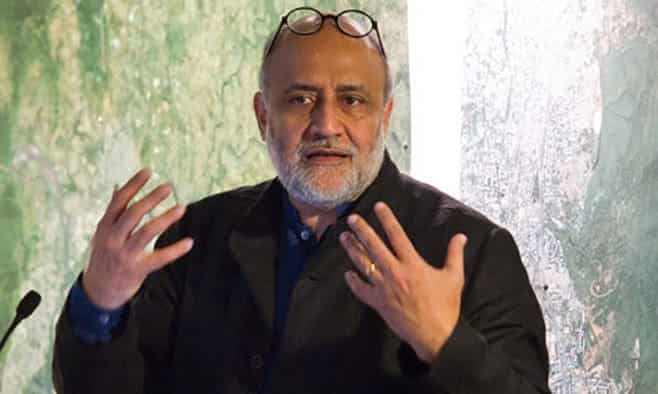Rahul Mehrotra is a practicing architect, urban designer, and educator. He is Professor of Urban Design and Planning and Chair of the Department of Urban Planning and Design at Harvard University, where he recently co-taught a course, “Livelihoods and Urban Form,” with WIEGO’s International Coordinator Martha Chen. He discussed with the WIEGO Blog how urban planning can better integrate informal livelihoods and the problems with current notions of “world-class” cities.
You coined the idea of a “kinetic city.” Can you explain this term and elaborate on what role informal workers play in the kinetic city?
The kinetic city is a form of urbanism where the usual binaries of the formal and informal or the rich and poor and state and private enterprise and other such models used to explain urban conditions of flux collapse into singular entities in space. What characterizes, for me, the kinetic state is that both the temporal as well as permanent articulations of space are equally important. In fact, the temporal landscapes become critical to the existence of the kinetic city.
Informality of many kinds needs these temporal occupations of space to survive and also to productively contribute to the city. However, when we pose these binaries, they are not productive categories to imagine spatial solutions. Good design by nature is about synthesis, and so the challenge is how to integrate the informal, the temporary, seamlessly into the design of the spatial dimension of cities. But, the kinetic city obviously cannot be seen as a design tool; rather, it is a demand that conceptions of urbanism create and facilitate environments that are versatile and flexible, robust and ambiguous enough to allow this kinetic quality of the city to flourish.
In India, 93 per cent of the workforce is informally employed. How can architects and planners think differently about creating cities that better include this majority population?
I think urban planners can think of spaces for those usually excluded from the imagination of the city, especially when the city is imagined as a stable and permanent entity. The city of flux, the temporary, the ephemeral, the kinetic city must be considered in the design imaginations for cities around the world.
What are the ramifications of ignoring livelihoods in urban spatial development?
The biggest ramification is on mobility and housing. When there are no spaces for livelihood near the place where people live, then you get disjunctures in the city that are hard to resolve. So either planners have to create spaces for livelihoods or governments have to enormously subsidize transportation so that mobility does not eat into people’s real income. In fact, in some ways public transportation is the best form of indirect subsidy that makes both livelihoods as well as housing affordable and viable.
Last semester at Harvard, you and WIEGO International Coordinator Martha Chen co-taught a course for the first time called “Livelihoods and Urban Form.” Why was it important to bring your perspectives together?
Cities are complex, and so the more lenses we use to look at them and the more disciplinary biases that can be brought to understand a city, the richer the experience. Marty Chen and I brought such disparate disciplinary understandings and perceptions of the issues that it was a delight for us as well as the students. Our perceptions of the problems were so different that the students, I think, learned a lot.
Cities such as Mumbai are striving toward a vision of “world class.” How do these visions get constructed and do they imagine a future that supports the informal economy?
The imagination of the world-class city is problematic and really is understood—or rather resonates with and is produced by—a small elite population in any city. I think this is used as a metaphor to construct an imagination of a city that competes with other cities for global capital and investments. To the middle class, I think, it’s understood as an efficient city with reliable public amenities (housing, health, mobility, education). Thus, politicians use the metaphors of Singapore and Shanghai, both alluding to the ideas of the world-class city to appeal to these populations. But all in all, I don’t think it takes us anywhere in imagining a just and equitable place. Unfortunately, this imagination has no place for the informal. In fact, it sees the informal as the problem that needs correction!
Are there any cities that are doing a good job of designing with livelihoods of informal workers in mind?
In a question like this, the use of the word “informal worker” also becomes problematic. Let’s use the example of Medellin. Now that the favelas are connected to the city and center of employment through transit systems, the workers can access formal sector jobs easily. So has the city made space for informal workers? No. But has the city integrated what used to be informal workers into the formal sector? Yes.
Or let’s take the case of Ahmedabad. By formalizing the use of the sidewalks for certain times at Law Garden for markets, does the market still stay informal if there is a way of formalizing it, even if for a few hours in the day? So my answer would be yes—there are many examples of cities where spaces for accommodating and integrating what used to be informal forms of operation are being provided. But I would also say that I don’t know of any city where they have made the accommodation of informal livelihoods central in their imagination of the form of the city. This is going to be a central challenge for both urban planners and designers in the coming decades.
